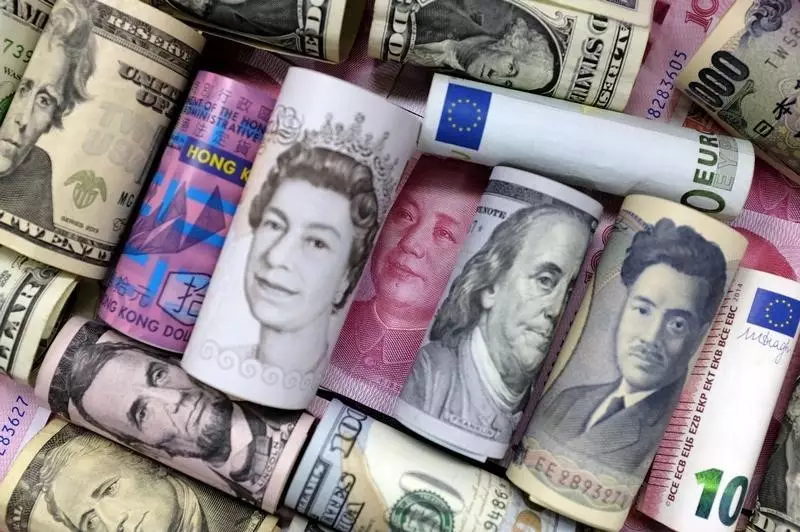The U.S. dollar saw a retreat on Tuesday, pulling back from a one-month high as yields dipped ahead of significant U.S. inflation data and the upcoming Federal Reserve meeting. The Dollar Index, which monitors the greenback against a selection of other currencies, was down 0.3% at 104.795, following a peak of 105.39 on Monday – the highest level since May 14. The recent surge in the dollar stemmed from a stronger-than-expected jobs report, coupled with increased Treasury yields, leading traders to scale back their expectations for Fed rate cuts in the current year.
With the release of the important U.S. consumer price data and fresh Federal Reserve interest rate forecasts scheduled for Wednesday, traders adopted a more cautious approach, causing yields to decline and subsequently weakening the dollar. The anticipated May CPI is forecasted to have a modest 0.1% increase month-on-month, marking a 3.4% annual rise – significantly surpassing the Fed’s 2% medium-term target. Despite the market pricing in some level of monetary easing this year, the likelihood of a reduction in September is now seen as a 50:50 chance.
As the Federal Reserve concludes its two-day policy-setting meeting, it is widely expected that there will be no change in interest rates. However, market participants are keen on observing any adjustments in the Fed officials’ expectations for the number of interest rate cuts in 2021. Given the dovish remarks made by Chair Jerome Powell during past press conferences following FOMC meetings, analysts are anticipating a similar outcome this time around, considering the modest expectations for the Fed’s easing cycle.
The EUR/USD pair remained relatively flat at 1.0761, following a slight dip to 1.0733 on Monday sparked by news of a snap election called by French President Emmanuel Macron. Concerns have arisen that a change in government could lead to a shift in fiscal consolidation strategies, potentially affecting the euro. Similarly, GBP/USD experienced a decline to 1.2719 after U.K. labor data revealed a rise in unemployment. This data could prompt the Bank of England to consider interest rate cuts, although wage-driven inflation continues to be a prevailing issue.
In Asia, USD/JPY moved 0.2% higher to 157.32 ahead of a Bank of Japan meeting, where a reduction in monthly government bond purchases is anticipated. Meanwhile, USD/CNY rose to 7.2542, nearing six-month highs as concerns surrounding an uneven economic recovery persist among traders. Despite the market volatility and uncertainty surrounding various economic indicators, investors are closely monitoring these developments for potential trading opportunities.
By maintaining a cautious approach and staying informed on key economic events and central bank decisions, market participants can position themselves strategically in the volatile currency markets. As global economic conditions continue to evolve, being adaptable and responsive to new information is essential for successful trading in the ever-changing landscape of foreign exchange markets.

